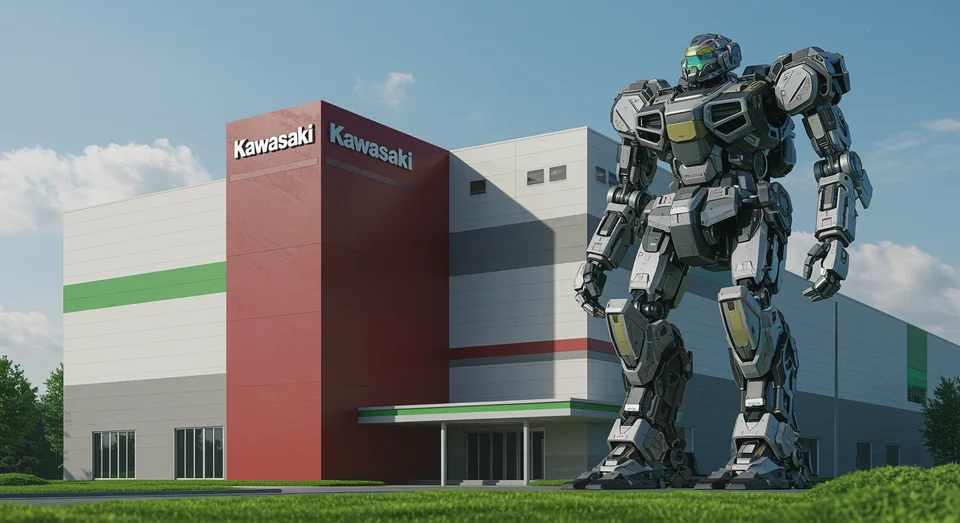Kawasaki Unveils CORLEO, Hydrogen-Powered Lion-Inspired Robot at Osaka-Kansai Expo 2025
247 views
Kawasaki Heavy Industries has unveiled CORLEO, a groundbreaking hydrogen-powered robot designed for human riders, promising to redefine off-road transportation with a blend of cutting-edge robotics and sustainable energy. Presented at the Osaka-Kansai Expo 2025, the four-legged prototype draws inspiration from the skeletal structure of lions, enabling it to traverse challenging terrains such as rocky landscapes, grassy fields, and steep slopes with remarkable agility. This innovative creation not only showcases Kawasaki's ambition to push the boundaries of robotics but also underscores its commitment to eco-friendly technology, as CORLEO operates on a hydrogen engine paired with a battery system that generates and stores electricity.

The Future of Mobility: Kawasaki's Lion-Inspired Robot and Its Vision for Sustainable Adventure
CORLEO is more than a feat of engineering; it’s a glimpse into the future of personal mobility in environments where traditional vehicles falter. The robot’s design borrows heavily from nature, with its four limbs modeled after the skeletal dynamics of lions, allowing for smooth and stable movement across uneven surfaces. This biomimicry is complemented by robust materials like metal and carbon fiber, ensuring durability while maintaining a futuristic aesthetic. The visual design reportedly takes cues from video games such as Horizon Zero Dawn, a nod to the seamless integration of technology and artistry that has captivated audiences in digital landscapes. Kawasaki’s engineers have crafted a machine that feels both futuristic and grounded, bridging the gap between imagination and functionality.
What sets CORLEO apart is its environmentally friendly hydrogen-powered engine, a 150cc marvel that works in tandem with a battery system to generate and store electricity. This dual mechanism not only reduces emissions but also reflects Kawasaki's broader commitment to sustainable energy solutions. Hydrogen, often hailed as a clean alternative to fossil fuels, positions CORLEO as a symbol of innovation in a world grappling with climate challenges. By harnessing this technology, Kawasaki aims to marry adventure with responsibility, offering a glimpse into how robotics can contribute to a greener future.
The prototype phase, however, reminds us that CORLEO is still a vision in progress. Kawasaki estimates it could take up to 25 years before the robot reaches commercial markets. This timeline, while lengthy, underscores the complexity of developing a machine that balances advanced robotics, energy efficiency, and rugged practicality. The Osaka-Kansai Expo serves as a fitting stage for unveiling such an ambitious project, offering a platform for Kawasaki to demonstrate its technological prowess while inviting global audiences to imagine the possibilities of sustainable innovation.
CORLEO is not an isolated venture within Kawasaki’s portfolio but rather a continuation of the company's broader robotics focus. Known for its industrial, collaborative, and educational robots, Kawasaki has long been a pioneer in applying robotic technology to diverse fields. With CORLEO, the company extends its expertise into outdoor adventures, a domain that has traditionally relied on conventional vehicles like ATVs and dirt bikes. By introducing robotics into this space, Kawasaki opens the door to new possibilities for exploration, whether it’s navigating remote wilderness or aiding in disaster recovery efforts where traditional vehicles may struggle.
The robot’s design also raises intriguing questions about the future of human-machine interaction. Riders control CORLEO through body movements, a feature that promises intuitive operation while fostering a deeper connection between user and machine. This approach aligns with broader trends in robotics that emphasize seamless integration and adaptability, suggesting that future iterations of CORLEO could incorporate even more advanced interfaces, such as AI-driven navigation systems or augmented reality overlays for enhanced situational awareness.
While the prospect of waiting decades for CORLEO to hit the market may temper immediate excitement, it’s worth reflecting on the broader implications of Kawasaki’s vision. The robot exemplifies how companies can leverage technology not merely for profit but as a tool for addressing global challenges, from environmental sustainability to mobility in extreme conditions. In this sense, CORLEO is as much a statement of intent as it is a prototype, signaling Kawasaki’s commitment to pushing the boundaries of what robotics can achieve.
The unveiling of CORLEO also invites broader discussions about the role of innovation in shaping our relationship with nature. By mimicking the movements of a lion, the robot pays homage to the resilience and adaptability of the natural world, reminding us that technology often finds its most profound inspiration in the ecosystems we inhabit. This fusion of biomimicry and engineering not only enhances functionality but also fosters a sense of connection between humans, machines, and the environment—a relationship that will undoubtedly grow more critical as we navigate the challenges of the 21st century.
As the Osaka-Kansai Expo 2025 approaches, CORLEO stands as a beacon of what’s possible when creativity meets responsibility. Kawasaki’s hydrogen-powered robot is not just a machine; it’s a vision of sustainable adventure, a testament to the power of innovation to transform how we explore the world around us. Though its commercial debut may be years away, its potential impact on robotics, mobility, and environmental stewardship is already resonating, offering a compelling glimpse into the future of transportation.
